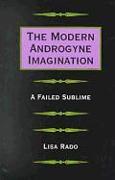- Start
- The Modern Androgyne Imagination
The Modern Androgyne Imagination
Angebote / Angebote:
In the late nineteenth century, as changing cultural representations of gender roles and categories made differences between men and women increasingly difficult to define, theorists such as Havelock Ellis, Richard von Krafft-Ebing, and Sigmund Freud began to postulate a third, androgynous sex. For many modern artists, this challenge to familiar hierarchies of gender represented a crisis in artistic authority. Faced with the failure of the romantic muse and other two-sex tropes for the imagination, James Joyce, H. D., William Faulkner, Virginia Woolf, and other modernist writers of both sexes became attracted to a culturally specific notion of an androgynous imagination.In The Modern Androgyne Imagination, Lisa Rado explores the dynamic process through which these writers filled the imaginative space left by the departed muse. For Joyce, the androgynous imagination meant experimenting with the idea of a "new womanly man". H. D. personified her "over-mind" as the androgynous Ray Bart. Faulkner supplanted the muse with the hermaphrodite. And Woolf became a kind of psychic transsexual.Although they selected these particular tropes for different reasons, literary men and women shared the desire to embody perceived strengths of both sexes and to transcend sexual and artistic limitation altogether. However, courting this androgynous imagination was a risky act. It often evoked the dynamics, even the specific vocabulary, of the sublime, which Rado characterizes as a perilous confrontation with and attempted identification between self and the transcendent other -- that powerful, androgynous creative mind -- through which they hoped to generate authority and find inspiration.Thisempowerment toward which Joyce, H. D., Faulkner, and Woolf gesture in texts such as Ulysses, HERmione, The Sound and the Fury, and Orlando is rarely achieved. Joyce and Faulkner were unable to silence their fears of feminization and the female body, while H. D. and Woolf remaine
Folgt in ca. 15 Arbeitstagen
